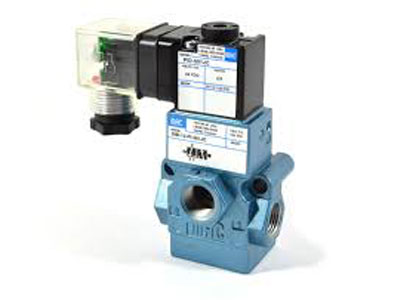Key Takeaway
Solenoid valves in liquid lines control the flow of liquids by opening or closing the valve. They are often used in systems where automatic control is needed, such as in refrigeration units or irrigation systems. By responding to electrical signals, solenoid valves help regulate the liquid flow efficiently and automatically. The main functions include starting or stopping fluid flow, mixing fluids, or diverting flow paths.
Solenoid valves are valued for their reliability and quick response time. They provide excellent control in systems that require frequent switching and are designed to operate efficiently under various conditions. This makes them a popular choice in many fluid control applications.
Controlling Liquid Flow with Precision
Solenoid valves are critical components in systems requiring precise liquid flow control. By leveraging electromagnetic action, they provide rapid and accurate responses to control signals, ensuring efficient operation.
These valves are widely used in applications such as irrigation systems, beverage dispensers, and medical devices, where precise dosing is vital. Their reliability and ability to handle varying pressures make them indispensable in automated fluid control setups, enhancing both performance and safety across diverse industries.

Ensuring System Safety with Solenoid Valves
Solenoid valves play a critical role in ensuring safety in various industrial and home systems. Their ability to control the flow of fluids or gases automatically helps prevent dangerous situations like over-pressurization, leakage, or unintentional fluid flow. For instance, in gas pipelines, solenoid valves act as fail-safe mechanisms that shut off the gas flow in case of an emergency or leak, preventing potential hazards like explosions or contamination.
In industrial systems, solenoid valves are often integrated into safety protocols, where they automatically close off fluid flow if any irregularities are detected by sensors. This is particularly important in high-risk environments such as chemical plants, where a malfunction could lead to dangerous chemical reactions. By using solenoid valves, engineers can enhance system reliability and provide a critical layer of protection against accidents.
Moreover, solenoid valves are commonly used in fire suppression systems. These systems rely on solenoid valves to control the release of firefighting agents. In the event of a fire, the solenoid valves activate automatically, ensuring that the system responds promptly to mitigate the risk. In all of these applications, solenoid valves not only ensure the smooth operation of systems but also provide safety by preventing unintended fluid or gas flow that could lead to dangerous situations.
You May Like to Read
How Solenoid Valves Prevent Leakage and Backflow
Solenoid valves are integral in preventing leakage and backflow in fluid systems. Their design allows for precise control over the opening and closing of flow paths, creating a reliable seal when in the closed position. This feature is crucial in applications where fluid containment is vital, such as in chemical processing or water treatment plants.
A key aspect of preventing leakage is ensuring that the solenoid valve is correctly sized and compatible with the system’s pressure and fluid type. Improper sizing or material selection can compromise the valve’s sealing capability, leading to potential leaks. Regular inspection and maintenance are necessary to address wear and tear that might affect the valve’s performance.
To prevent backflow, many solenoid valves are equipped with check valves or backflow prevention devices. These components ensure that fluid flows in only one direction, protecting the system from contamination or damage. By incorporating these preventive measures, solenoid valves enhance the safety and efficiency of fluid systems.
Role of Solenoid Valves in Pressure Management
Solenoid valves play a crucial role in pressure management across various industries. They act as control elements, regulating the flow of fluids and gases by opening or closing based on electrical signals. This ability to precisely control flow rates makes solenoid valves indispensable in systems that require accurate pressure control. Industries such as oil and gas, water treatment, and manufacturing rely heavily on solenoid valves to maintain safe and efficient operations.
One of the primary advantages of solenoid valves in pressure management is their rapid response time. Unlike manual valves, solenoid valves can quickly open or close, allowing for immediate adjustments to pressure levels. This quick response is particularly important in applications where pressure fluctuations must be minimized to ensure process stability. Additionally, solenoid valves can be easily integrated with automated control systems, providing seamless pressure management solutions.
The versatility of solenoid valves allows for their use in a wide range of applications, from simple on/off control to complex proportional control systems. Their compact design and low power consumption make them ideal for use in tight spaces and energy-efficient systems. By selecting the appropriate solenoid valve for the specific pressure management needs, industries can optimize system performance, reduce energy costs, and enhance overall safety and reliability. Proper maintenance and periodic testing further ensure that solenoid valves continue to perform effectively in pressure management applications.
Enhancing Efficiency in Liquid Transfer Systems
Enhancing efficiency in liquid transfer systems involves optimizing components like pumps, valves, and piping. Solenoid valves play a vital role by providing precision control over fluid flow, reducing waste and improving system responsiveness. Properly selected and maintained solenoid valves enhance overall system efficiency and reliability.
Integrating automation technologies with liquid transfer systems further boosts efficiency. Automated controls allow for real-time adjustments based on system conditions, minimizing energy consumption and operational costs. This integration facilitates better monitoring and management, ensuring optimal performance and reducing the risk of system failures.
Implementing energy-efficient components and maintaining regular inspections and maintenance schedules can significantly enhance system efficiency. Training personnel on best practices for operation and maintenance ensures the longevity and reliability of liquid transfer systems. By focusing on these strategies, organizations can achieve higher productivity and cost savings in their operations.
Conclusion
A solenoid valve’s primary function in a liquid line is to control the flow of liquids precisely. It ensures proper regulation, preventing leaks and maintaining operational safety.
By automating liquid control, these valves increase system efficiency and reliability, making them indispensable in many industries, including HVAC, chemical, and food processing.
